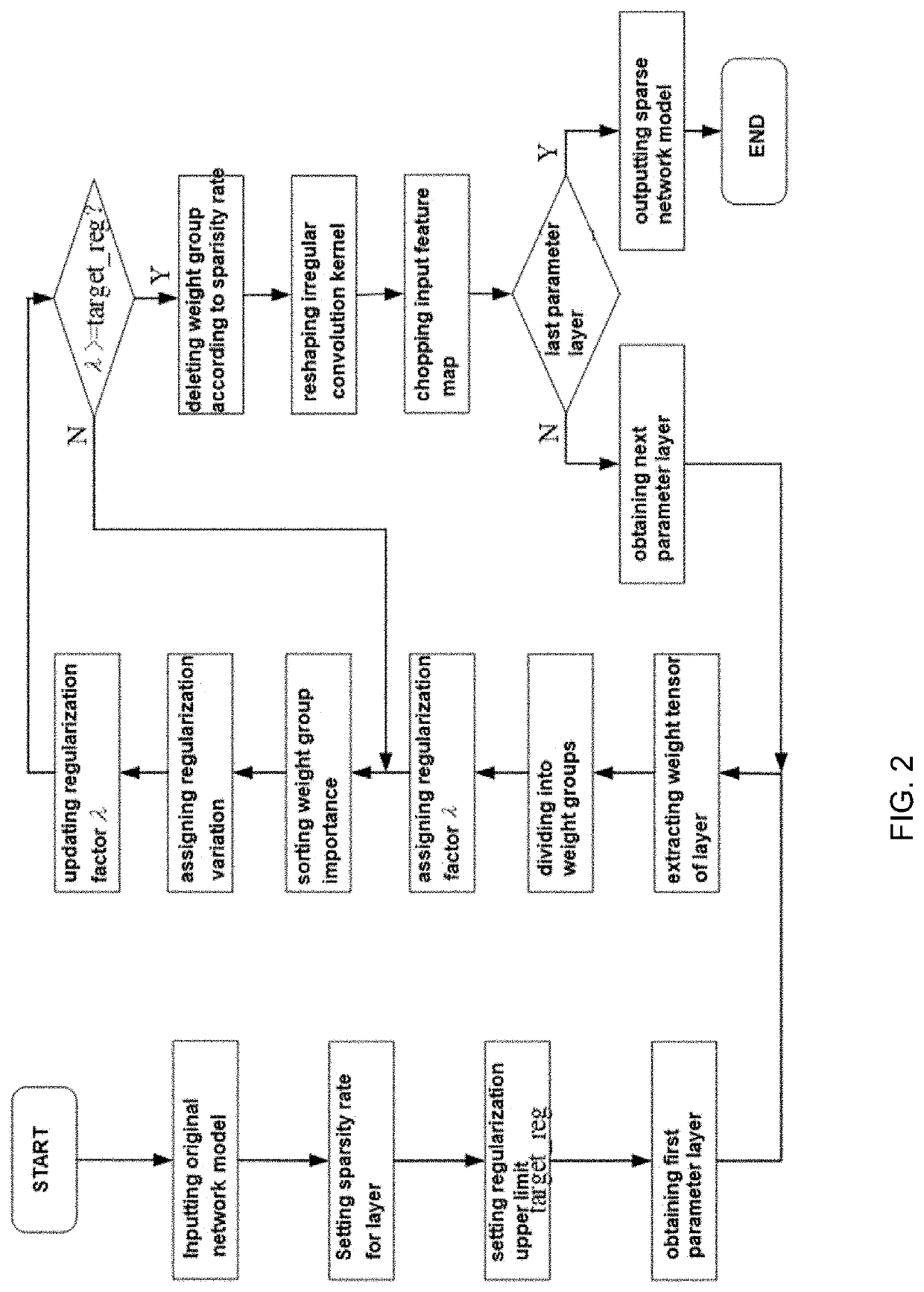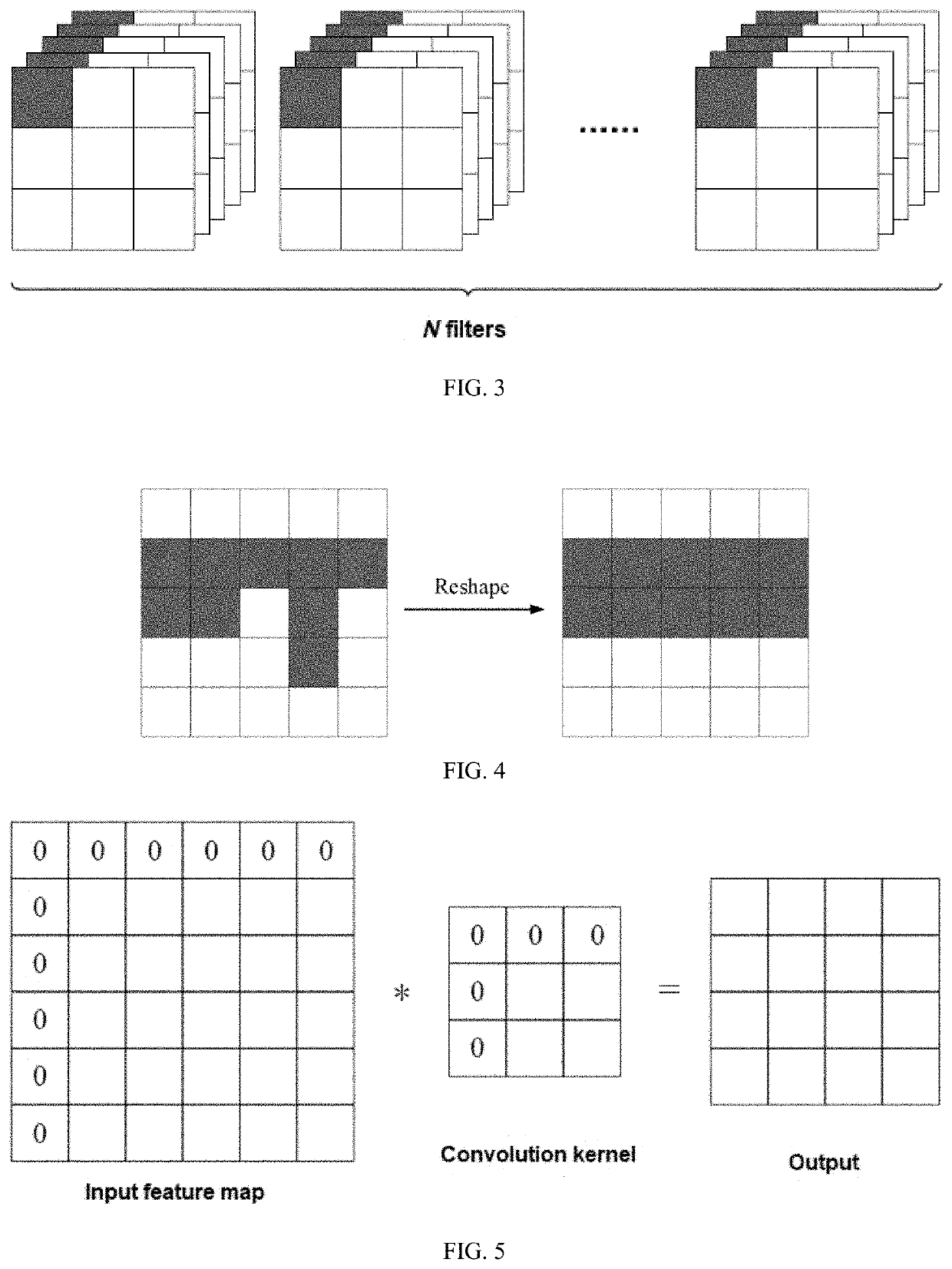Efficient image classification method based on structured pruning
a structured pruning and image classification technology, applied in the field of image processing and computer vision, can solve the problems of inefficient cnn, excessive computational and storage resources, and large amount of memory consumption, so as to improve image classification accuracy, reduce the number of training parameters, and improve model training
- Summary
- Abstract
- Description
- Claims
- Application Information
AI Technical Summary
Benefits of technology
Problems solved by technology
Method used
Image
Examples
Embodiment Construction
[0055]The present disclosure will be described in detail in conjunction with the embodiments below.
[0056]The present disclosure provides an efficient image classification method based on structured pruning. FIG. 1 is a flowchart of the general process.
[0057](1) Preparing a training dataset, a network structure configuration file, a training process configuration file, etc. Specifically, the training dataset contains about 1.2 million images from the ImageNet-2012 dataset, in a total of 1,000 classes. The test dataset contains new image data different from that of the training dataset, totaling 5,000 images in 1,000 classes. Label files for respective datasets are prepared, in which each image is labeled with one of the 1000 classes. The pre-trained model VGG-16 is used, and the network structure configuration file and the like are those of the original VGG-16 model (downloadable from https: / / cloud6.pkuml.org / f / 2a41fd0cbdc34d6d99d5 / ).
[0058](2) Preprocessing all input images. First, t...
PUM
 Login to View More
Login to View More Abstract
Description
Claims
Application Information
 Login to View More
Login to View More - R&D
- Intellectual Property
- Life Sciences
- Materials
- Tech Scout
- Unparalleled Data Quality
- Higher Quality Content
- 60% Fewer Hallucinations
Browse by: Latest US Patents, China's latest patents, Technical Efficacy Thesaurus, Application Domain, Technology Topic, Popular Technical Reports.
© 2025 PatSnap. All rights reserved.Legal|Privacy policy|Modern Slavery Act Transparency Statement|Sitemap|About US| Contact US: help@patsnap.com



